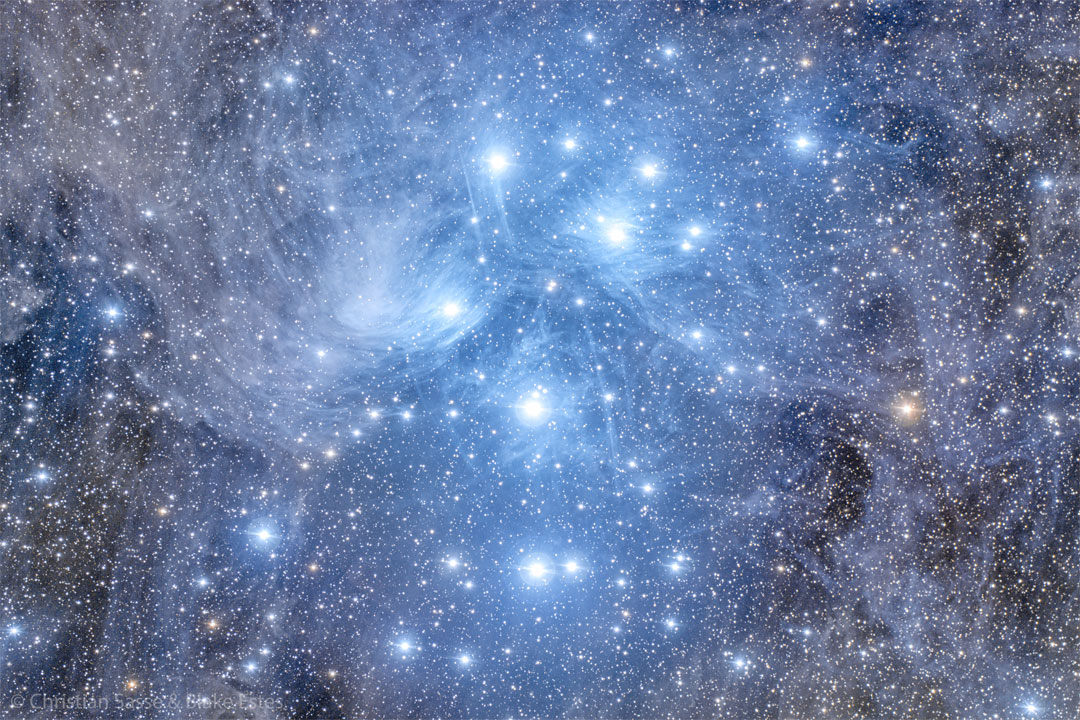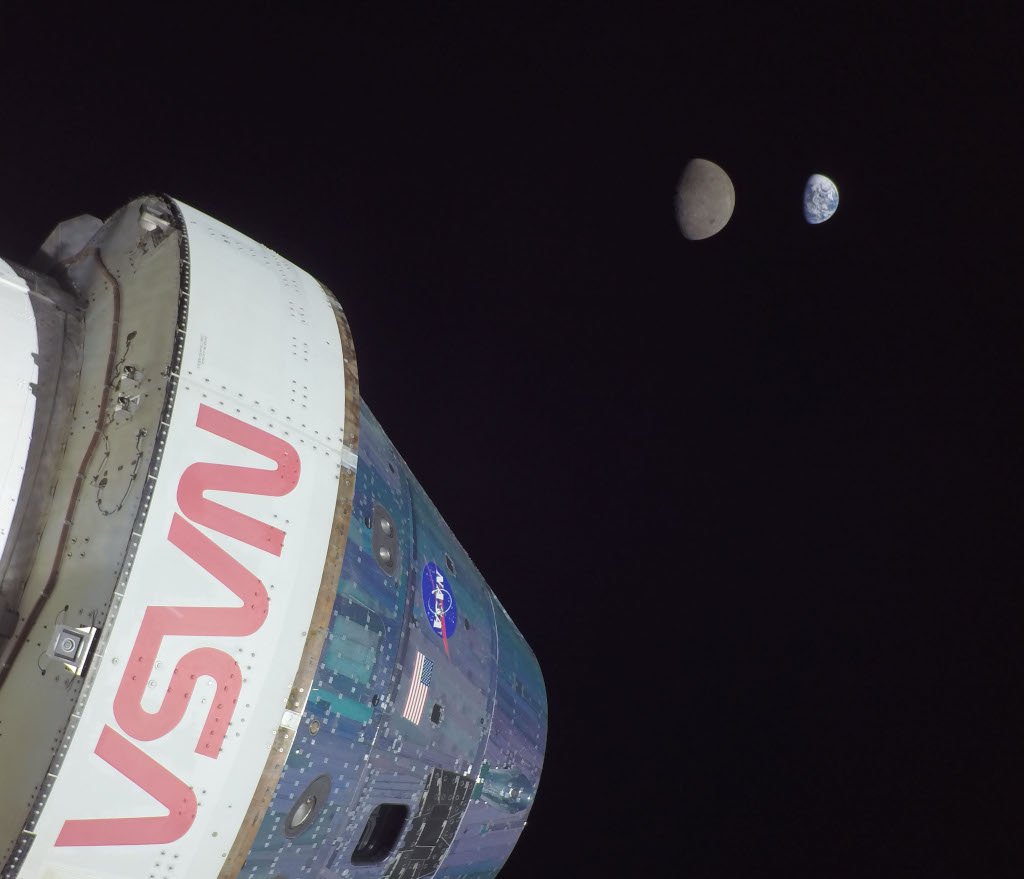© Harry Grant Dart pour All stroy magazine
Nombre total de pages vues
06/12/2022
AVIATION IMAGINEE - Les femmes pilotes d'avions : impensable à l'époque
ASTRONOMIE - Occultation de Mars (8 décembre 2022)
ASTRONOMY - M16: A Star Forming Pillar from Webb
2022 December 6
Image Credit: NASA, ESA, CSA, STScI, Processing & Copyright: Mehmet Hakan Özsaraç
Explanation: What’s happening inside this interstellar mountain? Stars are forming. The mountain is actually a column of gas and dust in the picturesque Eagle Nebula (M16). A pillar like this is so low in density that you could easily fly though it -- it only appears solid because of its high dust content and great depth. The glowing areas are lit internally by newly formed stars. These areas shine in red and infrared light because blue light is scattered away by intervening interstellar dust. The featured image was captured recently in near-infrared light in unprecedented detail by the James Webb Space Telescope (JWST), launched late last year. Energetic light, abrasive winds, and final supernovas from these young stars will slowly destroy this stellar birth column over the next 100,000 years.
05/12/2022
ASTRONOMY - Pleiades: The Seven Sisters Star Cluster
2022 December 5
Image Credit & Copyright: Blake Estes (iTelescope Siding Spring Obs.) & Christian Sasse
Explanation: Have you ever seen the Pleiades star cluster? Even if you have, you probably have never seen it as large and clear as this. Perhaps the most famous star cluster on the sky, the bright stars of the Pleiades can be seen with the unaided eye even from the depths of a light-polluted city. With a long exposure from a dark location, though, the dust cloud surrounding the Pleiades star cluster becomes very evident. The featured 11-hour exposure, taken from the Siding Spring Observatory in Australia, covers a sky area several times the size of the full moon. Also known as the Seven Sisters and M45, the Pleiades lies about 400 light years away toward the constellation of the Bull (Taurus). A common legend with a modern twist is that one of the brighter stars faded since the cluster was named, leaving only six of the sister stars visible to the unaided eye. The actual number of Pleiades stars visible, however, may be more or less than seven, depending on the darkness of the surrounding sky and the clarity of the observer's eyesight.
04/12/2022
MICROPHOTOGRAPHIE - Marek Miś - L'acide malique : le plein de goût
ASTRONOMY -Video: Powers of Ten
2022 December 4
Video Credit & Copyright: Charles & Ray Eames (Eames Office)
Explanation: How different does the universe look on very small scales? On very large scales? The most famous short science film of its generation gives breathtaking comparisons. That film, Powers of Ten, originally created in the 1960s, has been officially posted to YouTube and embedded here. From a picnic blanket near Chicago out past the Virgo Cluster of Galaxies, every ten seconds the film zooms out to show a square a factor of ten times larger on each side. The 9-minute video then reverses, zooming back in a factor of ten every two seconds and ends up inside a single proton. The Powers of Ten sequence is actually based on the book Cosmic View by Kees Boeke in 1957, as is a similar but mostly animated film Cosmic Zoom that was also created in the late 1960s. The changing perspectives are so enthralling and educational that sections have been recreated using more modern computerized techniques, including the first few minutes of the movie Contact. Ray and husband Charles Eames, the film's creators, were known as quite visionary spirits and even invented their own popular chair.
03/12/2022
AVIATION IMAGINEE - Influencée par les frères Montgolfier
ASTRONOMY - Stereo Mars near Opposition
2022 December 3
Image Credit & Copyright: Marco Lorenzi
Explanation: Mars looks sharp in these two rooftop telescope views captured in late November from Singapore, planet Earth. At the time, Mars was about 82 million kilometers from Singapore and approaching its opposition, opposite the Sun in planet Earth's sky on December 8. Olympus Mons, largest of the volcanoes in the Tharsis Montes region (and largest known volcano in the Solar System), is near Mars' western limb. In both the images it's the whitish donut-shape at the upper right. The dark area visible near center is the Terra Sirenum region while the long dark peninsula closest to the planet's eastern limb is Sinus Gomer. Near its tip is Gale crater, the Curiosity rover's landing site in 2012. Above Sinus Gomer, white spots are other volcanoes in the Elysium region. At top of the planet is the north polar cap covered with ice and clouds. Taken about two days apart, these images of the same martian hemisphere form a stereo pair. Look at the center of the frame and cross your eyes until the separate images come together to see the Red Planet in 3D.
02/12/2022
ASTRONOMY - Merging Galaxy Pair IIZw096
2022 December 2
Image Credit: ESA/Webb, NASA & CSA, L. Armus, A. Evans
Explanation: Bright at infrared wavelengths, this merging galaxy pair is some 500 million light-years away toward the constellation Delphinus. The cosmic mashup is seen against a background of even more distant galaxies, and occasional spiky foreground stars. But the galaxy merger itself spans about 100,000 light-years in this deep James Webb Space Telescope image. The image data is from Webb's Near-InfraRed Camera (NIRCam) and Mid-InfraRed Instrument (MIRI). Their combined, sharp infrared view follows galactic scale restructuring in the dusty merger's wild jumble of intense star forming regions and distorted spiral arms
01/12/2022
ASTRONOMY - Artemis 1: Flight Day 13
2022 December 1
Image Credit: NASA, Artemis 1
Explanation: On flight day 13 (November 28) of the Artemis 1 mission the Orion spacecraft reached its maximum distance from Earth. In fact, over 430,000 kilometers from Earth its distant retrograde orbit also put Orion nearly 70,000 kilometers from the Moon. In the same field of view in this video frame from flight day 13, planet and large natural satellite even appear about the same apparent size from the uncrewed spacecraft's perspective. Today (December 1) should see Orion depart its distant retrograde orbit. En route to planet Earth it will head toward a second powered fly by of the Moon. Splashdown on the home world is expected on December 11.
ASTRONOMY - Ice Halos by Moonlight and Sunlight
2026 January 9 Ice Halos by Moonlight and Sunlight Image Credit & Copyright : Antonella Cicala Explanation: Both Moon and Sun create...

-
2022 September 26 All the Water on Planet Earth Illustration Credit: Jack Cook, Adam Nieman, Woods Hole Oceanographic Institution ; Data ...
-
2025 May 11 The Surface of Venus from Venera 14 Image Credit: Soviet Planetary Exploration Program , Venera 14 ; Processing & Copyri...








